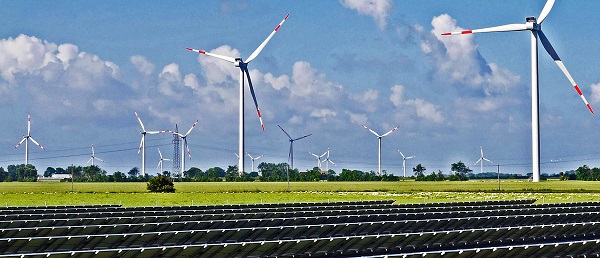Environment
UN chief returns as climate talks teeter closer to collapse

KATOWICE, Poland — The United Nations secretary-general flew back to global climate talks in Poland Wednesday to appeal to countries to reach an agreement, as some observers feared the meeting might end without a deal.
U.N. chief Antonio Guterres opened the talks last week, telling leaders to take the threat of global warming seriously and calling it “the most important issue we face.”
But as the two-week meeting shifted from the technical to political phase, with ministers taking over negotiations, campaign groups warned of the risks of failure in Katowice.
Harjeet Singh of ActionAid International said the main holdouts were the United States, Australia and Japan, while the European Union was “a mere spectator.”
“A new leadership must step up,” said Vanessa Perez-Cirera of the environmental group WWF. “We cannot afford to lose one of the twelve years we have remaining.”
She was referring to a recent scientific report by a U.N.-backed panel that suggested average global warming can only be halted at 1.5 degrees Celsius (2.7 Fahrenheit) if urgent action is taken by 2030, including a dramatic reduction in use of fossil fuels.
Endorsing the report by the Intergovernmental Panel on Climate Change became a crunch issue over the weekend, with the United States, Russia, Saudi Arabia and Kuwait opposing the move.
Jean-Pascal Ypersele, a former deputy chair of the panel, said whether or not countries believe the conclusions of the report was irrelevant because the science was clear.
“Nobody, even the so-called superpowers, can negotiate with the laws of physics,” he said.
Ypersele called for the 1.5-degree target — already mentioned in the 2015 Paris accord — to be recognized in the final text.
“It’s a question of survival for a large part of humanity, and many other species,” he said.
Poland, which is chairing the talks, was expected to circulate a condensed draft text Wednesday running to about 100 pages, down from about 300 at the start of the talks.
The Dec. 2-14 meeting is supposed to finalize the rules that signatories of the Paris accord need to follow when it comes to reporting their greenhouse gas emissions and efforts to reduce them.
Li Shuo, a climate expert at Greenpeace, warned that the current text was riddled with loopholes
“A Swiss cheese rulebook is unacceptable,” he said.
Poor countries also want assurances on financial support to tackle climate change.
A third objective of the talks is getting governments to make a firm commit to raising ambitions in the coming two years, albeit without any precise figures.
One issue that has risen to the fore at the talks is the proposal by Poland for countries to back the idea of a “just transition” for workers in fossil fuel industries facing closure from emissions-curbing measures.
Germany’s environment minister, Svenja Schulze, told reporters that her country is committed to phasing out the use of coal, though the exact deadline has yet to be determined.
But in a nod to the recent protests in France over fuel prices, Schulze warned against governments forcing through measures, saying they would lose public support “faster than you can spell climate protection, and then people pull on yellow vests.”
___
Monika Scislowska contributed to this report.
___
Read more stories on climate issues by The Associated Press at https://www.apnews.com/Climate
Frank Jordans, The Associated Press
Automotive
Politicians should be honest about environmental pros and cons of electric vehicles

From the Fraser Institute
By Annika Segelhorst and Elmira Aliakbari
According to Steven Guilbeault, former environment minister under Justin Trudeau and former member of Prime Minister Carney’s cabinet, “Switching to an electric vehicle is one of the most impactful things Canadians can do to help fight climate change.”
And the Carney government has only paused Trudeau’s electric vehicle (EV) sales mandate to conduct a “review” of the policy, despite industry pressure to scrap the policy altogether.
So clearly, according to policymakers in Ottawa, EVs are essentially “zero emission” and thus good for environment.
But is that true?
Clearly, EVs have some environmental advantages over traditional gasoline-powered vehicles. Unlike cars with engines that directly burn fossil fuels, EVs do not produce tailpipe emissions of pollutants such as nitrogen dioxide and carbon monoxide, and do not release greenhouse gases (GHGs) such as carbon dioxide. These benefits are real. But when you consider the entire lifecycle of an EV, the picture becomes much more complicated.
Unlike traditional gasoline-powered vehicles, battery-powered EVs and plug-in hybrids generate most of their GHG emissions before the vehicles roll off the assembly line. Compared with conventional gas-powered cars, EVs typically require more fossil fuel energy to manufacture, largely because to produce EVs batteries, producers require a variety of mined materials including cobalt, graphite, lithium, manganese and nickel, which all take lots of energy to extract and process. Once these raw materials are mined, processed and transported across often vast distances to manufacturing sites, they must be assembled into battery packs. Consequently, the manufacturing process of an EV—from the initial mining of materials to final assembly—produces twice the quantity of GHGs (on average) as the manufacturing process for a comparable gas-powered car.
Once an EV is on the road, its carbon footprint depends on how the electricity used to charge its battery is generated. According to a report from the Canada Energy Regulator (the federal agency responsible for overseeing oil, gas and electric utilities), in British Columbia, Manitoba, Quebec and Ontario, electricity is largely produced from low- or even zero-carbon sources such as hydro, so EVs in these provinces have a low level of “indirect” emissions.
However, in other provinces—particularly Alberta, Saskatchewan and Nova Scotia—electricity generation is more heavily reliant on fossil fuels such as coal and natural gas, so EVs produce much higher indirect emissions. And according to research from the University of Toronto, in coal-dependent U.S. states such as West Virginia, an EV can emit about 6 per cent more GHG emissions over its entire lifetime—from initial mining, manufacturing and charging to eventual disposal—than a gas-powered vehicle of the same size. This means that in regions with especially coal-dependent energy grids, EVs could impose more climate costs than benefits. Put simply, for an EV to help meaningfully reduce emissions while on the road, its electricity must come from low-carbon electricity sources—something that does not happen in certain areas of Canada and the United States.
Finally, even after an EV is off the road, it continues to produce emissions, mainly because of the battery. EV batteries contain components that are energy-intensive to extract but also notoriously challenging to recycle. While EV battery recycling technologies are still emerging, approximately 5 per cent of lithium-ion batteries, which are commonly used in EVs, are actually recycled worldwide. This means that most new EVs feature batteries with no recycled components—further weakening the environmental benefit of EVs.
So what’s the final analysis? The technology continues to evolve and therefore the calculations will continue to change. But right now, while electric vehicles clearly help reduce tailpipe emissions, they’re not necessarily “zero emission” vehicles. And after you consider the full lifecycle—manufacturing, charging, scrapping—a more accurate picture of their environmental impact comes into view.
Agriculture
Canada’s air quality among the best in the world

From the Fraser Institute
By Annika Segelhorst and Elmira Aliakbari
Canadians care about the environment and breathing clean air. In 2023, the share of Canadians concerned about the state of outdoor air quality was 7 in 10, according to survey results from Abacus Data. Yet Canada outperforms most comparable high-income countries on air quality, suggesting a gap between public perception and empirical reality. Overall, Canada ranks 8th for air quality among 31 high-income countries, according to our recent study published by the Fraser Institute.
A key determinant of air quality is the presence of tiny solid particles and liquid droplets floating in the air, known as particulates. The smallest of these particles, known as fine particulate matter, are especially hazardous, as they can penetrate deep into a person’s lungs, enter the blood stream and harm our health.
Exposure to fine particulate matter stems from both natural and human sources. Natural events such as wildfires, dust storms and volcanic eruptions can release particles into the air that can travel thousands of kilometres. Other sources of particulate pollution originate from human activities such as the combustion of fossil fuels in automobiles and during industrial processes.
The World Health Organization (WHO) and the Canadian Council of Ministers of the Environment (CCME) publish air quality guidelines related to health, which we used to measure and rank 31 high-income countries on air quality.
Using data from 2022 (the latest year of consistently available data), our study assessed air quality based on three measures related to particulate pollution: (1) average exposure, (2) share of the population at risk, and (3) estimated health impacts.
The first measure, average exposure, reflects the average level of outdoor particle pollution people are exposed to over a year. Among 31 high-income countries, Canadians had the 5th-lowest average exposure to particulate pollution.
Next, the study considered the proportion of each country’s population that experienced an annual average level of fine particle pollution greater than the WHO’s air quality guideline. Only 2 per cent of Canadians were exposed to fine particle pollution levels exceeding the WHO guideline for annual exposure, ranking 9th of 31 countries. In other words, 98 per cent of Canadians were not exposed to fine particulate pollution levels exceeding health guidelines.
Finally, the study reviewed estimates of illness and mortality associated with fine particle pollution in each country. Canada had the fifth-lowest estimated death and illness burden due to fine particle pollution.
Taken together, the results show that Canada stands out as a global leader on clean air, ranking 8th overall for air quality among high-income countries.
Canada’s record underscores both the progress made in achieving cleaner air and the quality of life our clean air supports.
-

 Crime1 day ago
Crime1 day agoTerror in Australia: 12 killed after gunmen open fire on Hanukkah celebration
-

 Crime1 day ago
Crime1 day agoHero bystander disarms shooter in Australian terror attack
-

 Business2 days ago
Business2 days agoInflation Reduction Act, Green New Deal Causing America’s Energy Crisis
-

 Business2 days ago
Business2 days agoFuelled by federalism—America’s economically freest states come out on top
-

 Daily Caller2 days ago
Daily Caller2 days ago‘There Will Be Very Serious Retaliation’: Two American Servicemen, Interpreter Killed In Syrian Attack
-

 Automotive2 days ago
Automotive2 days agoPoliticians should be honest about environmental pros and cons of electric vehicles
-

 International5 hours ago
International5 hours agoAt Least 15 Killed In Shooting Targeting Jewish Community At Australia’s Bondi Beach, Police Say
-

 Alberta2 hours ago
Alberta2 hours agoSchools should go back to basics to mitigate effects of AI






